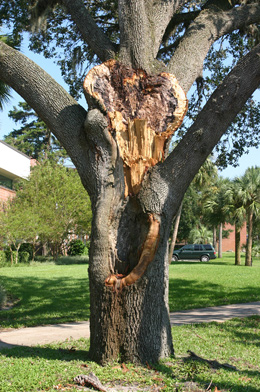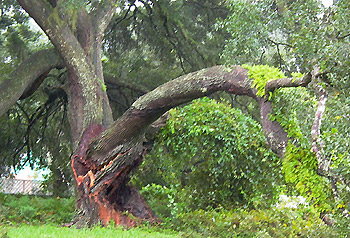Home > Storm damage prevention > What we learned > Trees that fail
Trees that fail once are more likely to fail again
Trees that fail once appear to be more prone to failure again. This is typically due to recognizable defects. One of the most common defects is bark inclusions on large limbs. Both failed trees shown below had severe bark inclusions on large heavy limbs that extended a great distance from the trunk.
If you see that a tree has failed before, make it a priority to treat this tree before others. Treatments for trees that have failed before include removal, reduction of parts, reduction of the entire tree, or cabling and bracing. See: reduction of entire tree, cabling and bracing.

This live oak lost a large limb 9 years ago as indicated by the large opening in the bottom of the trunk. A recent 70 mph storm caused a second large limb to split from the tree.

A large limb split from this tree two years ago (see dark area on lower trunk). Then a 70 mph storm broke a second limb shown above.

